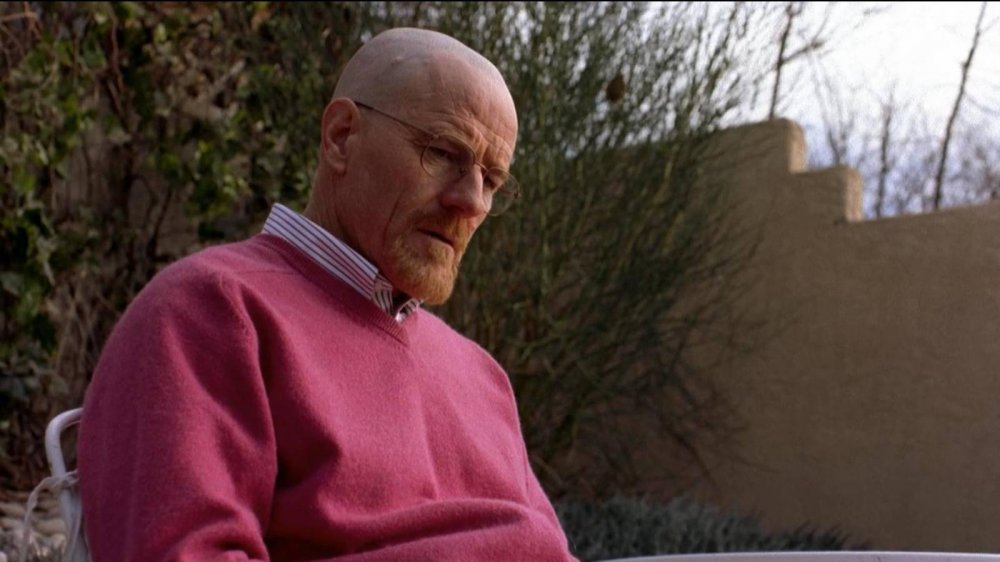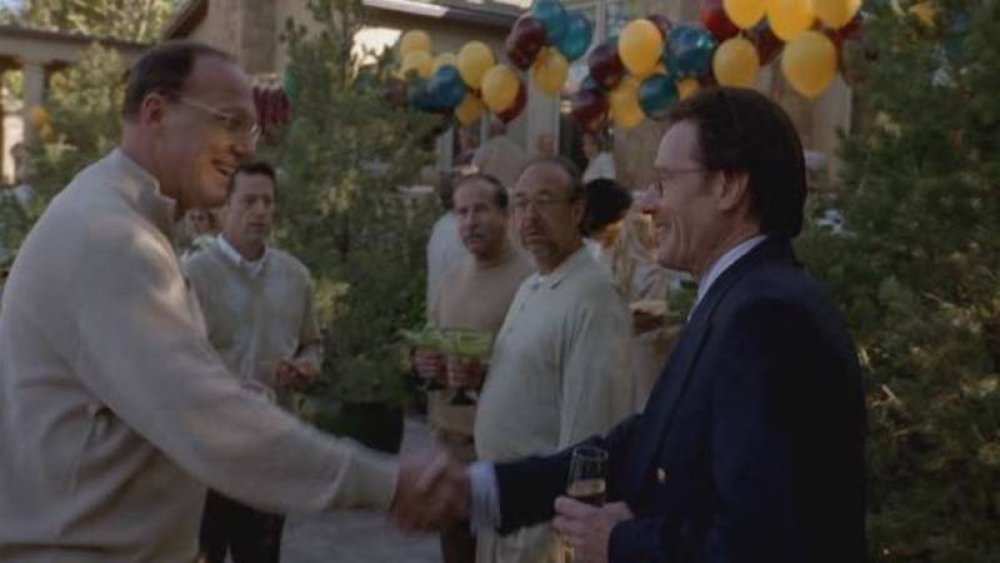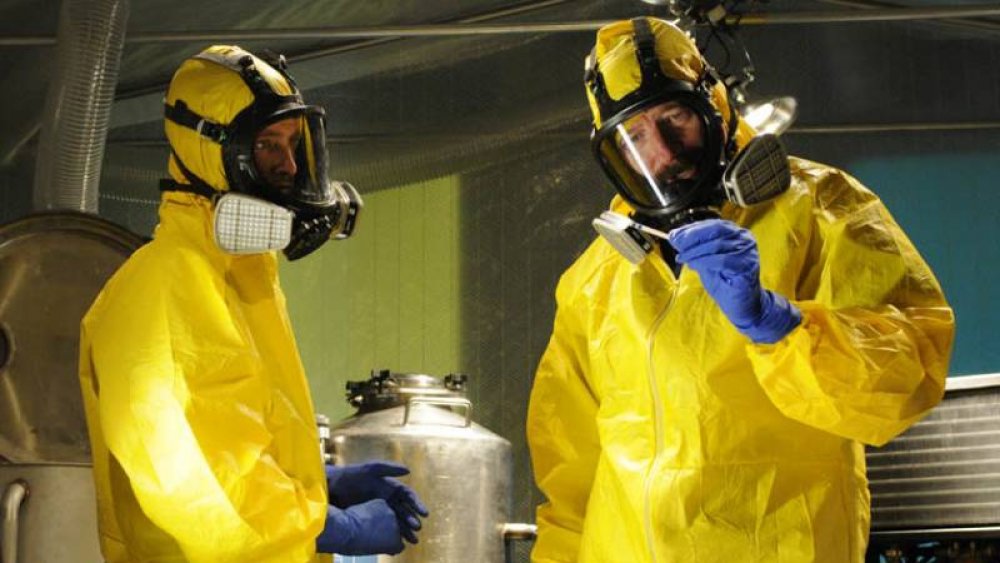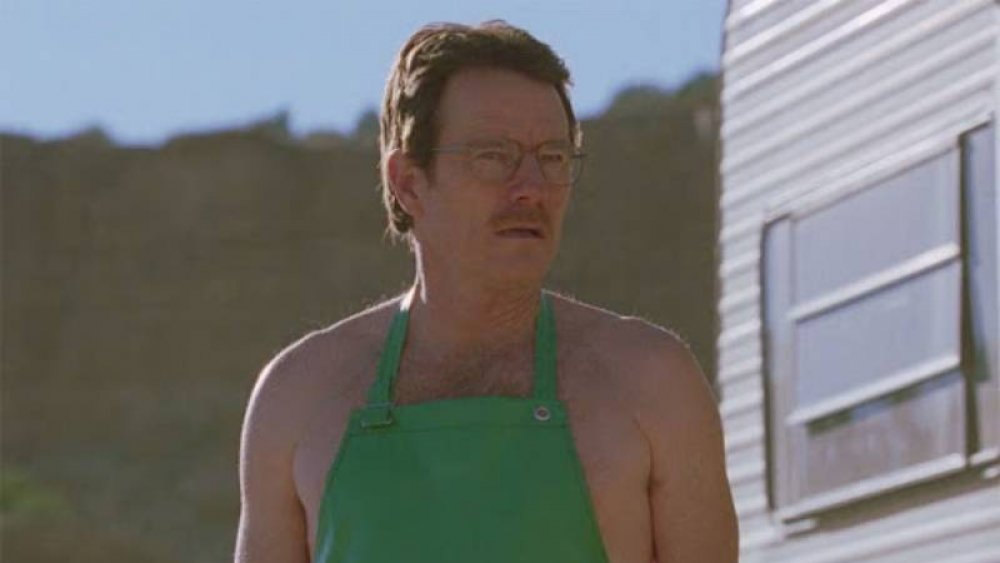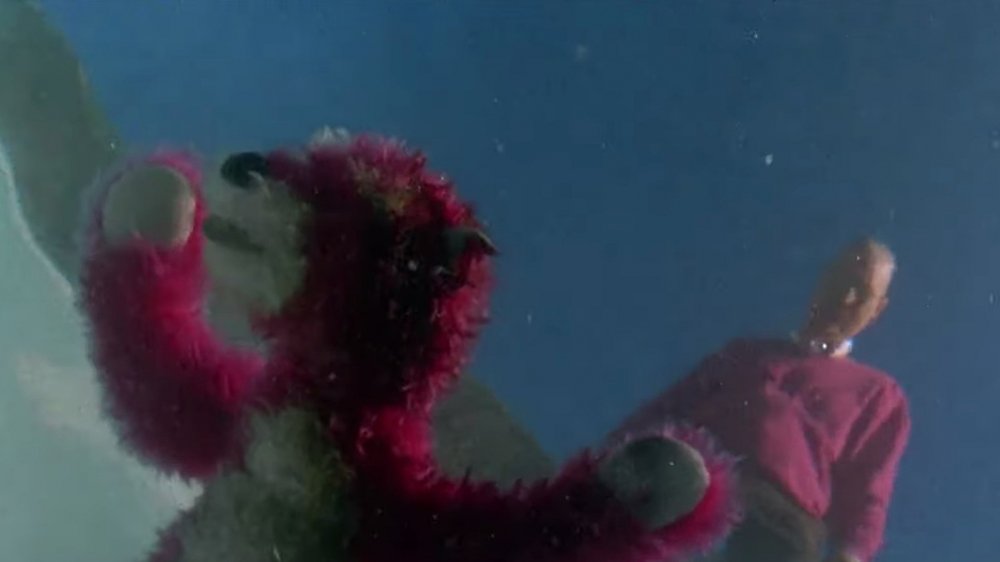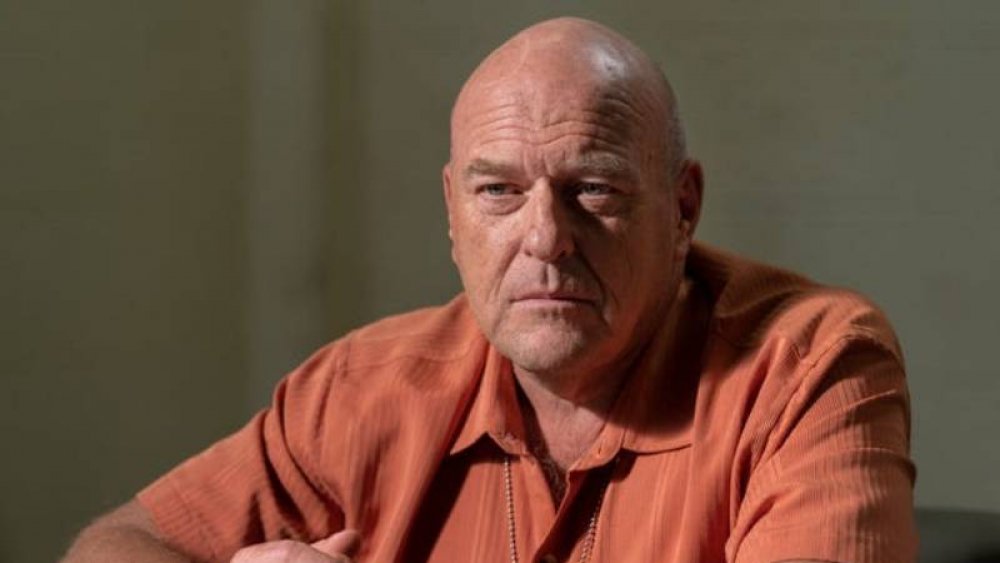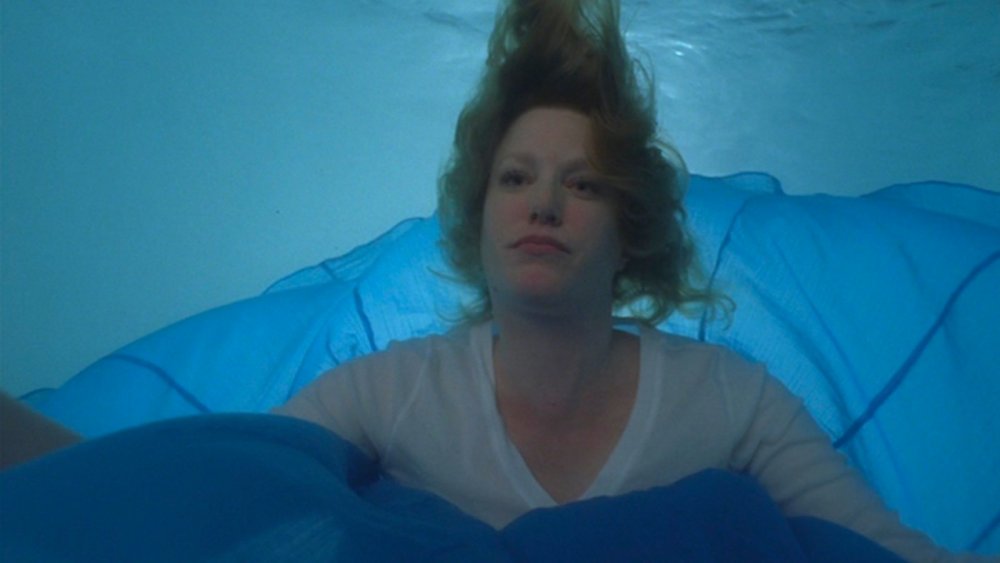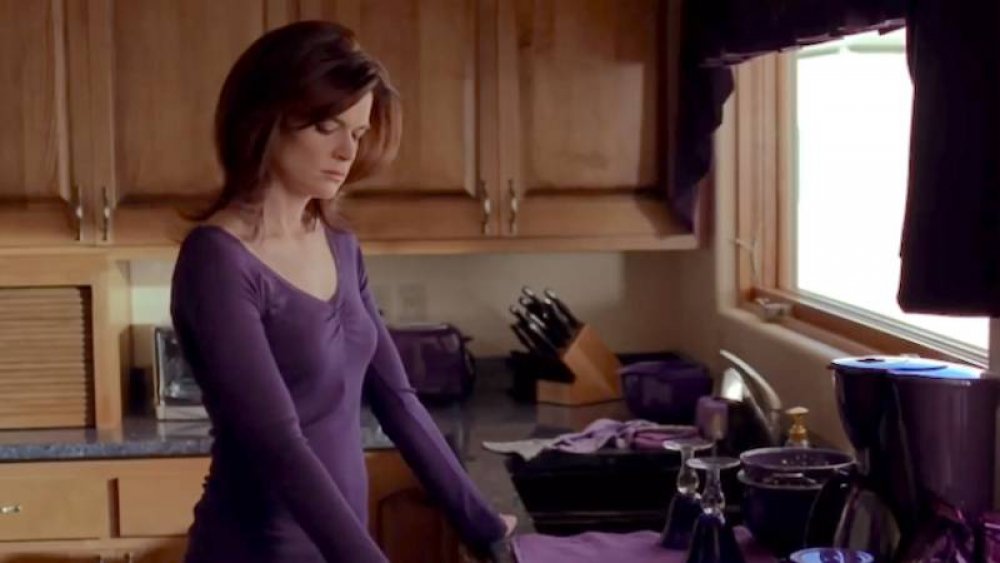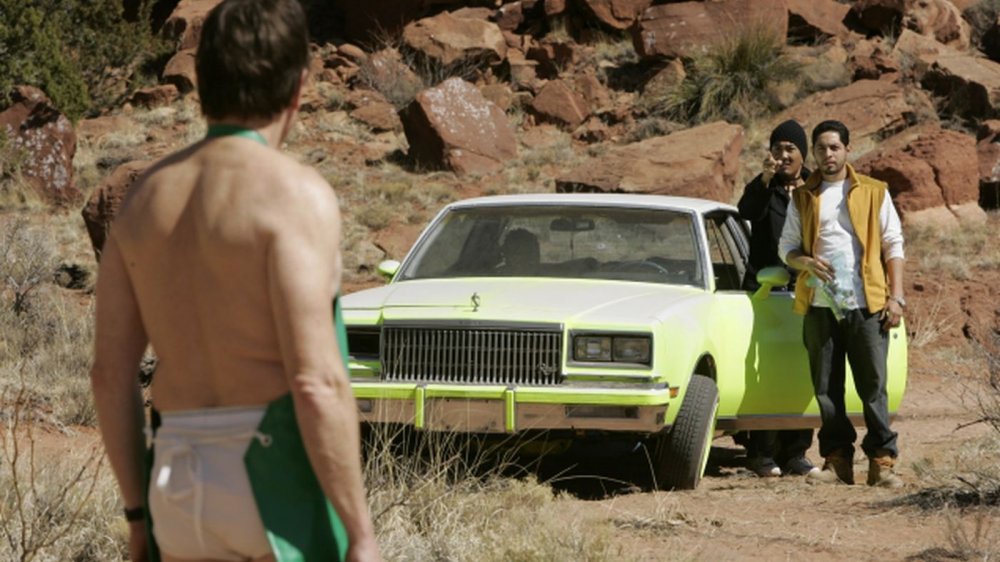What You Never Noticed About The Colors In Breaking Bad
There are numerous reasons why fans continue to obsess over Breaking Bad to this day. The writing and directing made you feel like you were watching a high-caliber film every week. The show knew how to balance humor and tension exceptionally well, particularly within the chemistry between its two leads, Walter White (Bryan Cranston) and Jesse Pinkman (Aaron Paul). Finally, it's a show that rewards rewatches as you gradually realize how much attention to detail each Breaking Bad season contained.
Vince Gilligan and crew took a story of a high school chemistry teacher and his former student selling meth and turned it into high art. There are details in the first season that don't pay off until the fifth. A single line of dialogue foreshadows what's to come years later. If you were to rewatch it now, then you would probably pick up on all kinds of Breaking Bad Easter eggs that went over your head the first time. And if you're planning your next Breaking Bad binge-watch on Netflix, then you definitely want to pay attention to the colors the characters wear.
Colors play a key role in the series. Think about it: Two of the main characters are Walter "White." Jesse "Pink"-man. The meth they sell is famous for being blue. In a Reddit thread started by u/420nipnops, color theory in Breaking Bad goes far beyond surface-level names. The colors certain characters wear indicate specific aspects of their personality, and you can even track a character's development through the colors they tend to wear.
Don't believe us? Just keep reading to have your mind blown like Gus Fring's.
Beige indicates that someone is not a threat
Beige is a pretty boring color when you get right down to it. Your eyes are never drawn to it in a room. Yet Breaking Bad took this innocuous color and turned it into heavy symbolism that plays an integral role in Walter's character arc.
In the first season, every time we see Walter White teaching a class, he's wearing beige. He has a beige sweater during his birthday party. This symbolizes to the audience that Walter White (at the beginning of the show) is a boring guy. He doesn't look like the kind of person who's done anything fun in his life.
Then, we get to the episode in which Walter and Skyler (Anna Gunn) attend Elliott Schwartz's (Adam Godley) birthday party. Walter and Skyler dress up in what they think are rich person party clothes, only to discover that all of the other guests have on beige clothing. While Walter has begun his slow descent into Heisenberg, the bland party shows that in this scenario, Walt is safe. There won't be any gunfire and explosions taking place any time soon.
Walter slowly loses his predominantly beige wardrobe as the series progresses, and he substitutes it out for some very interesting colors we'll get into shortly.
Yellow symbolizes the meth business on Breaking Bad
Characters who drag Walter deeper within the meth business have a proclivity for wearing yellow. When we're first introduced to Jesse, he wears a lot of yellow clothing, particularly that yellow hoodie he has on in the pilot. Later in the series, when Walter and Jesse start working for Gus Fring, they have to wear yellow jumpsuits for the industrial levels of meth they're now producing.
Speaking of Gus, think about the color scheme of Los Pollos Hermanos. There are a ton of yellows found in the restaurant, and any time we see Gus Fring (Giancarlo Esposito) in his managerial role, he has on a button-down yellow shirt. In the 5th season episode "Blood Money," we see the word "Heisenberg" spray-painted in yellow on Walter's former house.
Yellow represents meth, and more specifically, it represents the descent into the criminal underworld. Yellow is worn by the worst of the worst in the show, and when you see it, it's a safe bet some shady stuff is about to go down.
Green on Breaking Bad represents money and (more importantly) change
It perhaps should come as no surprise that the color green is heavily associated with money throughout the series. Green is prominent in the main Breaking Bad title sequence at the beginning of every episode, but even though not a single dollar appears in that sequence, green is an appropriate color for its other association on the show. Throughout the series, green comes up when a character undergoes a radical change.
The first time we see Walter wearing green is in the pilot, when he takes off his beige color and dons a green apron. In essence, he's stripping away his old life and adorning himself with the color that will symbolize everything that will transpire in the seasons to come. It's his first step to becoming Heisenberg. As the first season progresses, we see him wear green more and more often.
Another important time when Walter wears green is when he goes to plant that bomb that will ultimately kill Gus Fring. It's another radical change, because the balance of power in the meth underworld is about to change drastically, and once Gus is out of the way, Walter will have the opportunity to make more money than he's ever seen before.
Pink stands for childlike innocence on Breaking Bad
Pink stands for naivety and innocence. This may seem at odds with the most prominent way pink is expressed in the show (Jesse "Pink"-man), but it actually means more than you might think. Jesse starts the show as just some punk, but as he delves deeper into the criminal underworld, losing people he loves along the way, he slowly begins unraveling at the seams. This is due to the fact that at the end of the day, he's just a kid who bit off more than he could chew.
Jesse is particularly affected when children get caught in the crosshairs of his meth-making ways. One child who played a significant role in the show (even though we never see them) is whoever owned the pink teddy bear that fell into Walter's pool in the season 2 episode "ABQ." The only reason the planes crashed in the first place is that Jane's (Krysten Ritter) father, Donald Margolis (John de Lancie), was distraught over his daughter's death, and was unable to adequately perform his duties as an air traffic controller. The bear represents all of the ways Walter's evil has impacted the world beyond just meth heads and gangbangers. Due to Walter's actions, the world's a darker place, and all the pink that surrounds him shows the tragedy of lost innocence.
Orange represents danger and anything that's a threat to Walter White
Orange often indicates a clear and present danger, particularly to Walter. In the season 2 episode "Grilled," there's a quick moment in whicj we learn Walter doesn't like orange juice. His distaste for "orange" juice can be traced to the fact that when people wear orange around Walter, his at risk of being caught for his crimes.
Think about what Hank Schrader (Dean Norris) wears throughout much of the first season. He can often be found wearing orange shirts, and this is due to the fact that he's on the trail of Heisenberg, getting closer to discovering the kingpin's true identity with each episode.
Another prominent time orange comes into play is in the episode "Box Cutter." Gus Fring puts on an orange jacket and pants before he kills Victor with the titular box cutter. But before he lunges at Victor, we as the audience don't know what Gus has in store. For a few brief moments, him wearing orange means he could have turned the box cutter on Walter and/or Jesse. He chooses not to, but when you see orange on screen, it's a safe bet something crazy is about to occur.
Blue stands for loyalty and dependability on Breaking Bad
There are several ways to interpret blue throughout Breaking Bad. Most notably, blue is the color of the signature meth Walter and Jesse create. The explanation for why the meth is blue is due to the process through which it was made, resulting in meth of the highest purity anyone has ever seen. Being pure or loyal is often exhibited in characters who wear blue, particularly Skyler.
In the beginning of the series, as well as in flashbacks later on, we see Skyler wearing blue before Walter began making meth, or when she was unaware of his new enterprise. Walt Jr. (RJ Mitte) also wears a fair amount of blue, and he remains blissfully unaware of what his father is doing throughout much of the show.
Unfortunately, said loyalty tends to result in sadness. As the series progresses, Skyler wears less and less blue. Jane wears blue denim when she dies in her sleep, and when it comes time for her father to pick a dress for her burial, her father selects a blue one.
Purple is ... something Marie just likes on Breaking Bad
Of course, you can't talk about colors in Breaking Bad without bringing up how much Marie Schrader (Betsy Brandt) loved purple. The shading is typically associated with royalty, and if we apply that idea to Marie, then we understand how much she wants the finer things in life. It's possible Marie wore and surrounded herself with a ton of purple because she wanted to project to others an air of wealth and well-being. That desire for wealth got her into plenty of trouble when she went through her shoplifting phase, taking important items that landed her in hot water more than once.
It's interesting to look at purple in relation to Marie's wardrobe. Other characters evolve in colors throughout the show. Walter begins by wearing beige and gradually evolves into reds and blacks. Although Marie can be seen wearing yellow and other colors from time to time, purple is always there somehow.
White symbolizes purity on Breaking Bad
The character's name is Walter "White" for a reason. The White family is your average, innocent American family when the series first begins. They have money problems, as evidenced by the fact Walter has to work a second job, but they can still afford a house and cars. When Walter first begins cooking meth, he has a green apron (to symbolize change), but he also wears starkly white underwear. It shows that Walter is still a good person despite entering into this new life. He still retains some level of purity because he doesn't want to be a meth kingpin. At the start, he's just doing it to provide for his family after he dies from cancer.
It's noteworthy that when Walter adopts the Heisenberg persona, he dresses in all black, complete with a black porkpie hat. It shows how Walter has done a complete 180 in his personality. Gone is the mild-mannered chemistry teacher who wouldn't harm a fly. All that's left in his place is the best meth maker the world has ever seen.
Colors play a key role in the series, but there are plenty of other details you might have missed in Breaking Bad. It's a show you can watch a dozen times and still find new things to appreciate, so it's no wonder why it's still considered one of the greatest TV series to ever air.
